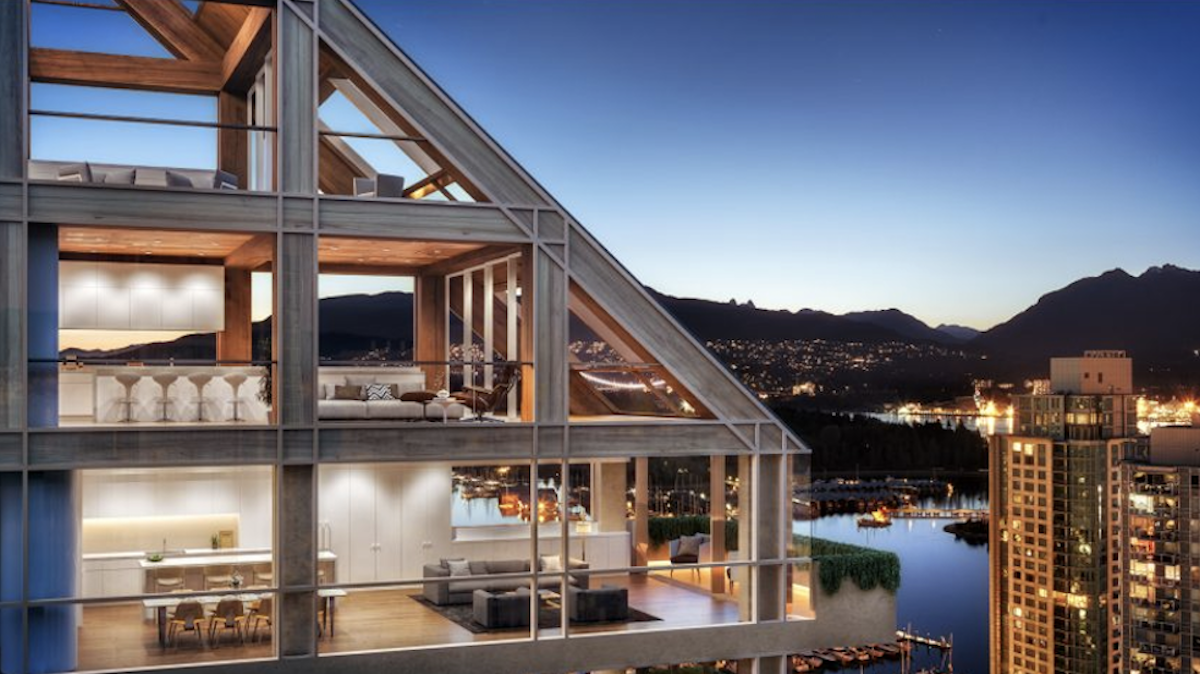The use of mass timber, such as cross laminated timber (CLT) and glue laminated timber (GLT) panels, is gaining interest among architects, interior designers, contractors, structural engineers, and real estate developers in the U.S., Canada, Europe, and Asia. Mass timber is particularly appropriate for the multifamily sector: apartment and condominium residences, senior living, and student housing.
Multifamily project teams should consider adopting a 5-point design-assist approach as a way to achieve the aesthetic, budgetary, financial, and marketing goals of the developer.
1. Establish a holistic team to achieve the developer’s budget goals.
The design-assist approach, such as the one we use at Mass Timber Services, brings together multiple trades and consultants early on in the preconstruction process. It's crucial for the entity leading the design-assist initiative to choose like-minded, passionate, dedicated AEC professionals from firms who share the greater mission: to use mass timber to reduce carbon emissions, save energy, and combat climate change, while achieving a beautiful, highly functional multifamily residences that meet the business needs of the developer and the "human" needs of the occupants.
Initial meetings must clearly identify the scope of the project and determine trade-specific details needed to ensure the right product with the right amenities is being built for the market.
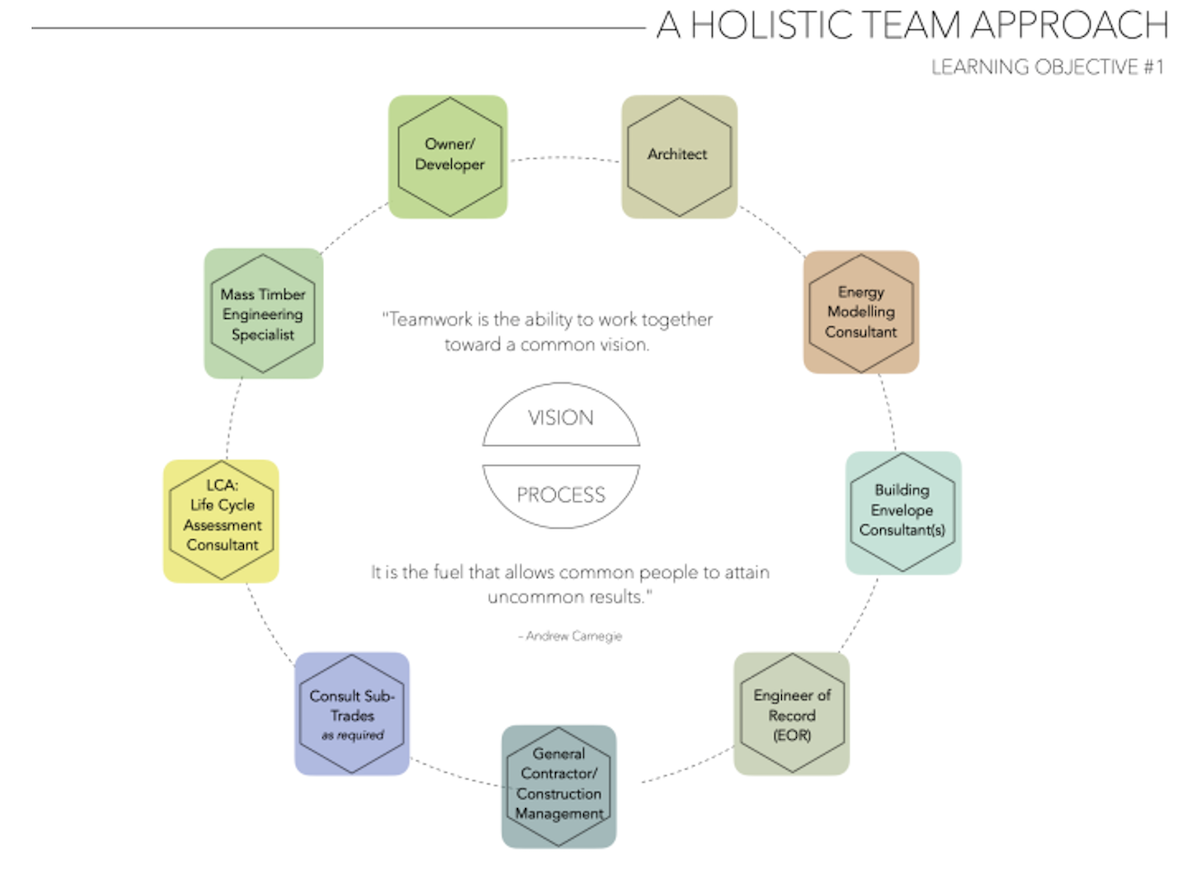
Don't rush to pick your team members. It's much more important to pick the right ones than it is to pick them quickly, as the information exchange between the trades and consultants impacts each of them. Cross-trade communication and strategic planning optimize timelines and can ultimately save money.
For mass timber design-assist multifamily projects, it is important to choose a facilitator firm with a track record in the use of mass timber – one that understands the manufacturing, engineering, design, and construction management aspects of such a project and has a global perspective on sourcing the right mass timber materials for the specific job.
2. Use a preconstruction approach to estimate construction costs and analyze your building system.
Integrating mass timber building systems is an intelligent process. Preconstruction proposals are prepared after concept development and engineering modeling, to provide cost and schedule certainty for the projects. Both the ultimate purpose of the residential building and building codes need to be considered when determining best building materials, building strategy, and building systems.
In the initial stages of the project, multifamily developers will typically use their data from previous development projects, attempting to account for similarities and differences in their estimate. However, due to constantly changing economic factors, it can be difficult to determine an exact budget, at least at first. Each specialty project team member on the project must provide the most accurate, current market pricing which aligns everyone toward an agreed upon budget.
Preconstruction proposals include the detailed quantity take off, engineeing review, preparation of building specifications, duration for erections of the structure, logistical planning suggestions, and schedules.
The following chart provides a schematic visualization of a full-service design and product offering.
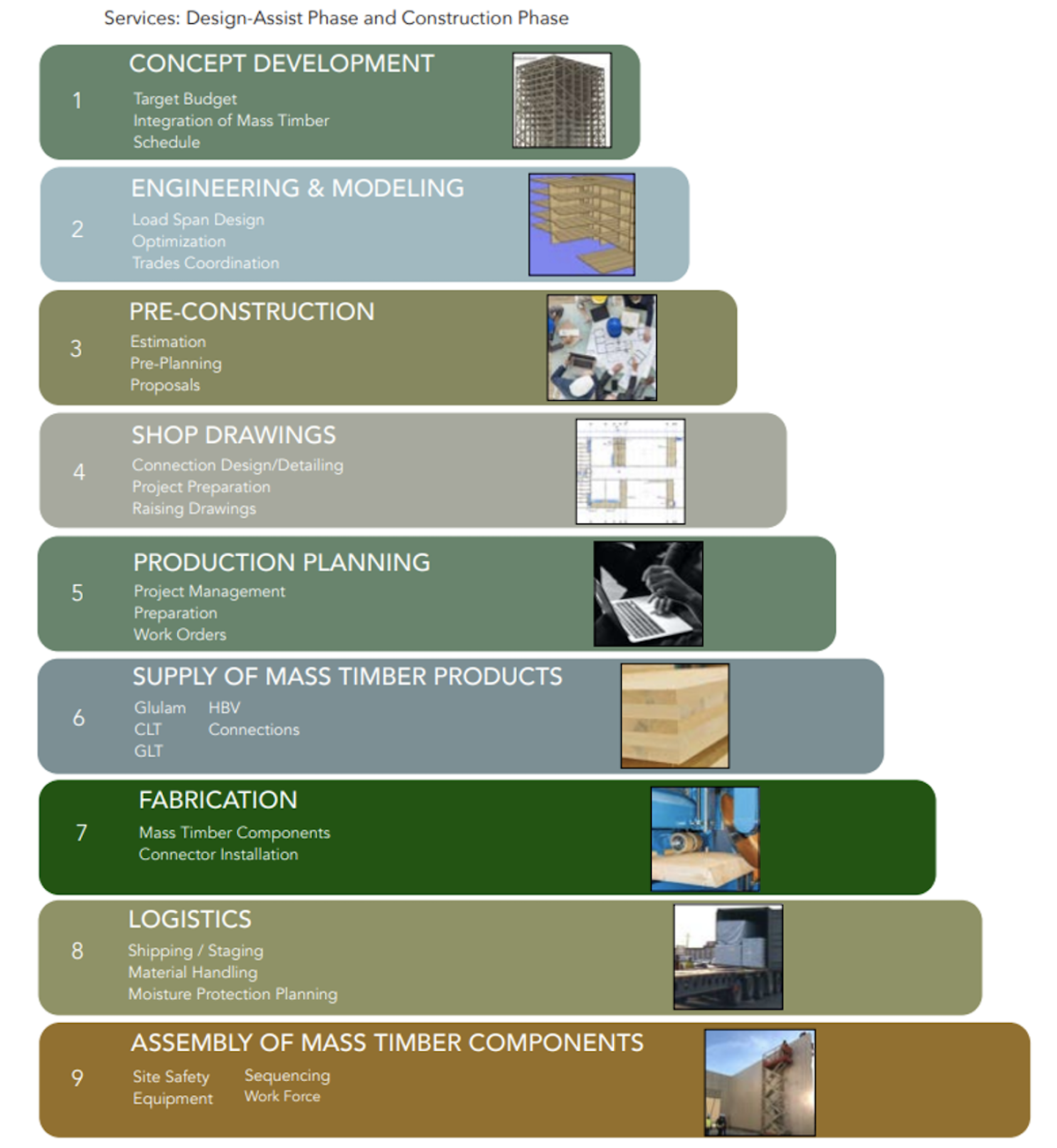
3. Employ automation in design for cost efficiency.
The automation process in mass timber design speeds up delivery of the entire building and provides top-quality materials, allowing prefabrication at the highest levels of quality and accuracy.
Flat pack standardization and modular thinking reduce costs by taking advantage of CNC programming and the factory-automated environment. Materials are first harvested and dried in the kiln before the lamination process. In the fabrication phase, detailed shop and production drawings, defining sizing and materials, are converted to machine language. The building arrives in containers with components mapped for just-in-time installation and connector assembly on site.

Delivering the panels to the job site requires skill, knowledge, and experience. Be sure to use a mass timber supplier with a proven record of logistical excellence.
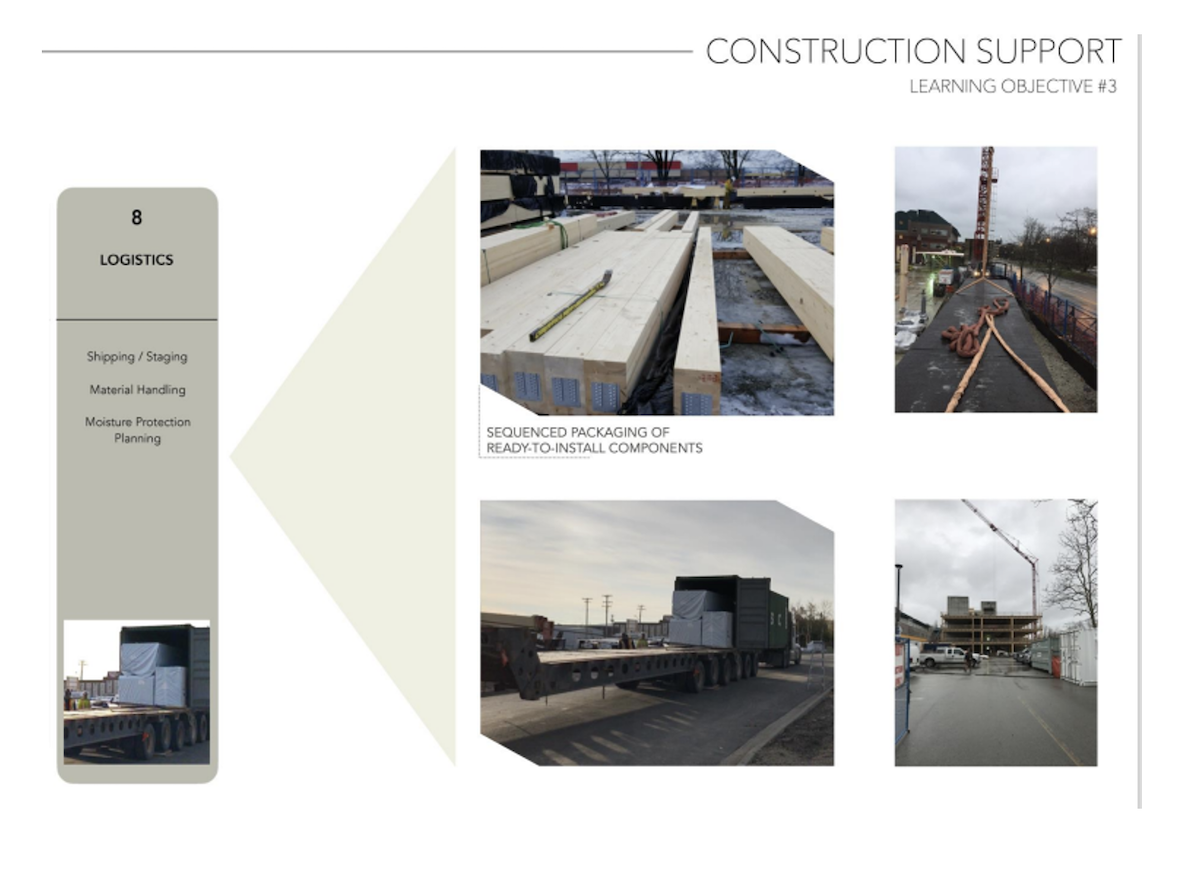
4. Consider the multipurpose use of engineered wood panel products.
The use of prefabricated mass timber walls, floors, roofs, and shear walls and interior wood panels purposes the materials for dual structural and decorative uses. Interior walls, partitions, and ceiling softwood (solid core) multi-ply panels – which are 3-layer version of CLT – can replace drywall on walls, which eliminates the need for mudding, sanding, and multiple paint applications.
Known as Nano CLT, these laminated panels range in cost from $3-10 per square foot depending on wood species selected. Used as encapsulation material for less appealing structural surfaces, this product can enhance the "face" or "look" of a building – in a lobby, as an accent wall, in a lounge area, in an apartment or condominium unit, or in an external soffit.
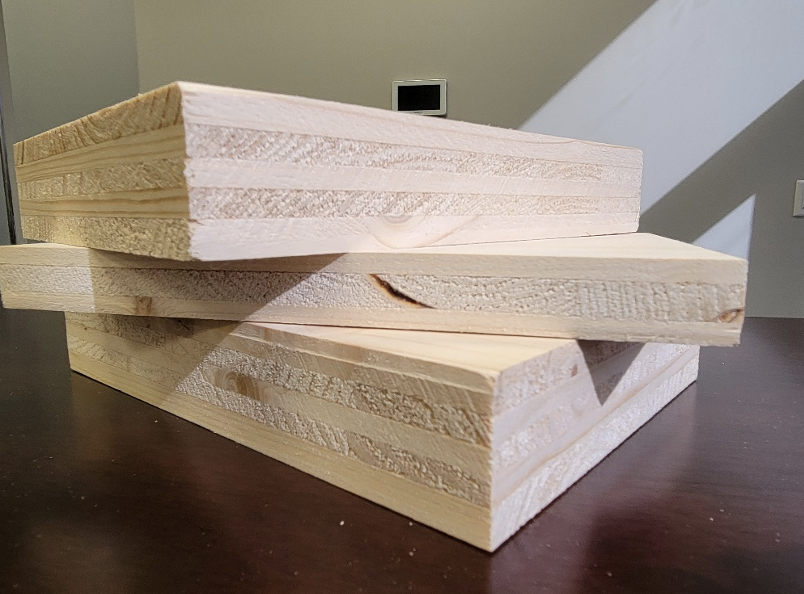
Adding finishing touches through the use of decorative engineered wood enhances the biophilic benefits of a multifamily residential, thereby increasing the value of the space.

5. Incorporate biophilic architecture into your mass timber project.
Biophilia is emerging as an essential element in new builds, exhalting high-performance design into the forefront of 21st-century building.
Architectural opportunities now center nature in design with human-made environments where occupants experience improvements in stress levels, productivity, creativity, and overall wellness.
Japanese architect Shingeru Ban has been hailed as a 21st-century innovator in architecture and design by Time magazine.
Here are two of his designs that incorporate mass timber and thereby enhance the biophilic benefit to occupants.
Haesly Hamlet, Yeoju, South Korea
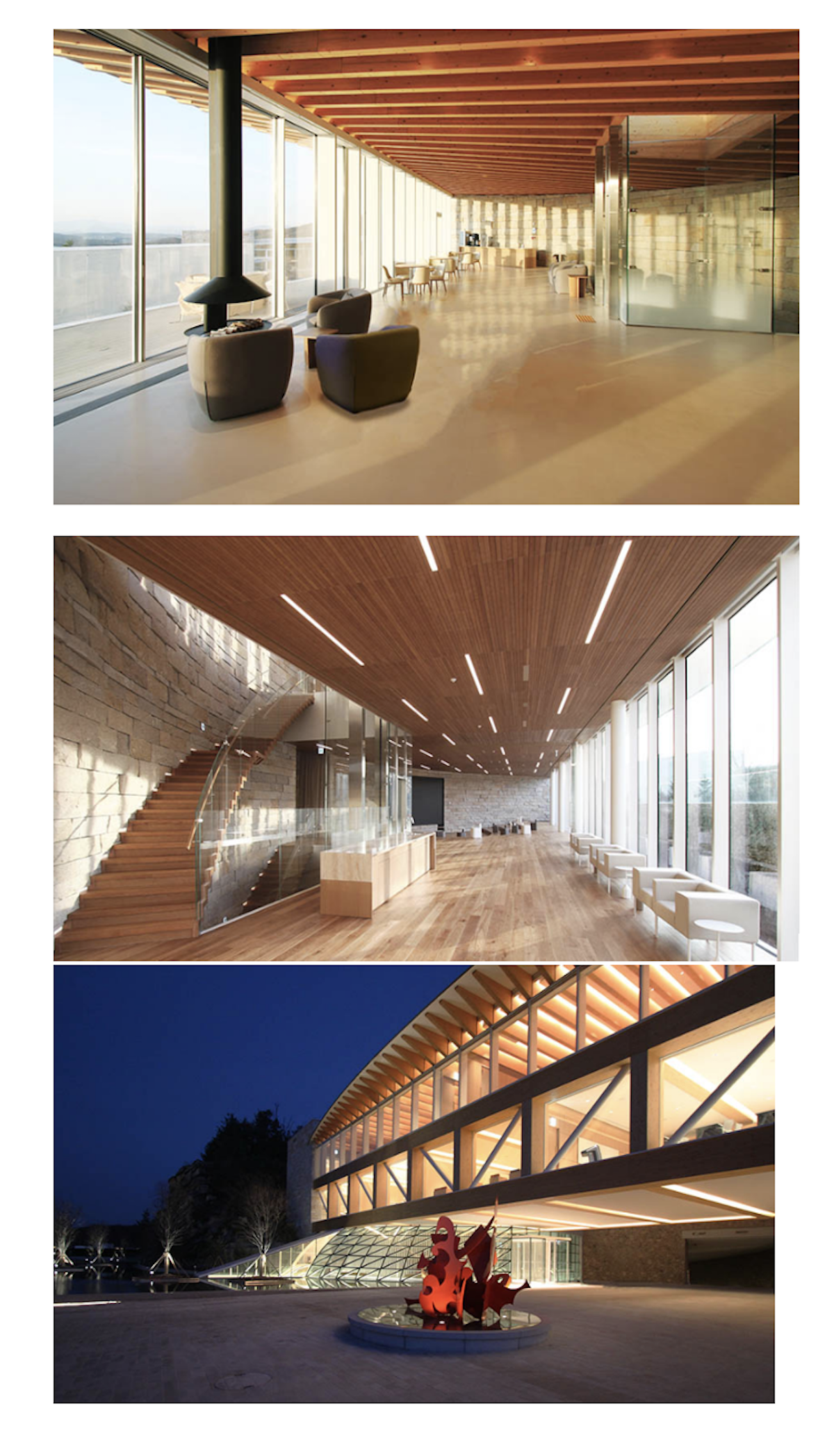
ZEN Wellness SEIWEI, Awaji, Hyogo, Japan
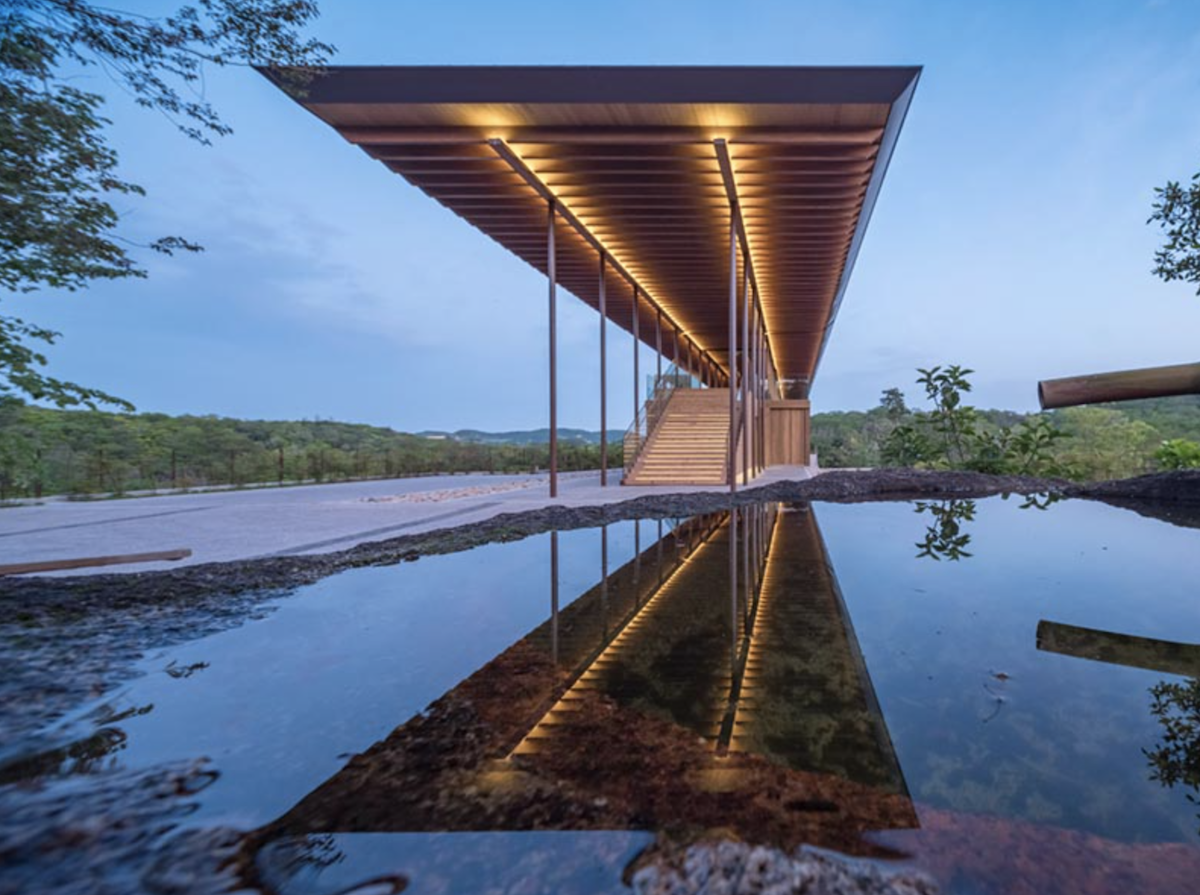

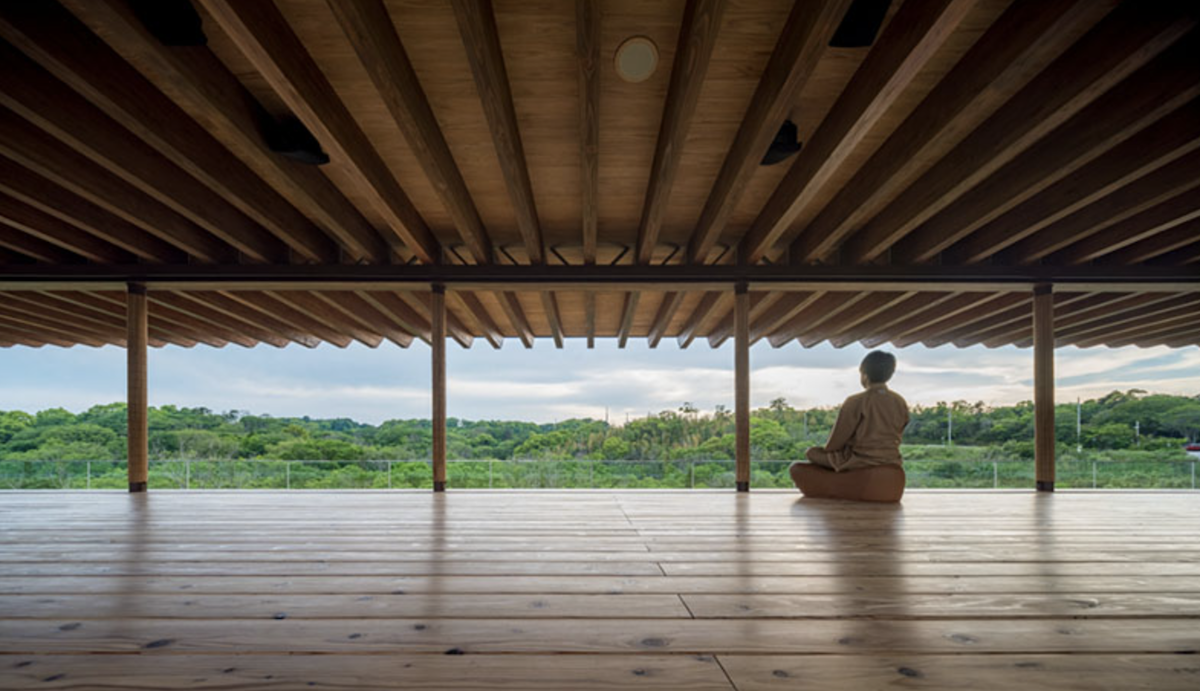
MASS TIMBER SHAKE TEST AT UC SAN DIEGO
The Natural Hazards Engineering Research Infrastructure (NHERI), which is supported by the National Science Foundation, is conducting a study of the seismic resilience of mass timber solutions for tall buildings. A 10-story building with mass timber rocking walls is under construction on the comprehensive shake table at the University of California, San Diego.
The study will test the building's resilience to assure that nonstructural components sustain minimal damage or are easily repairable.
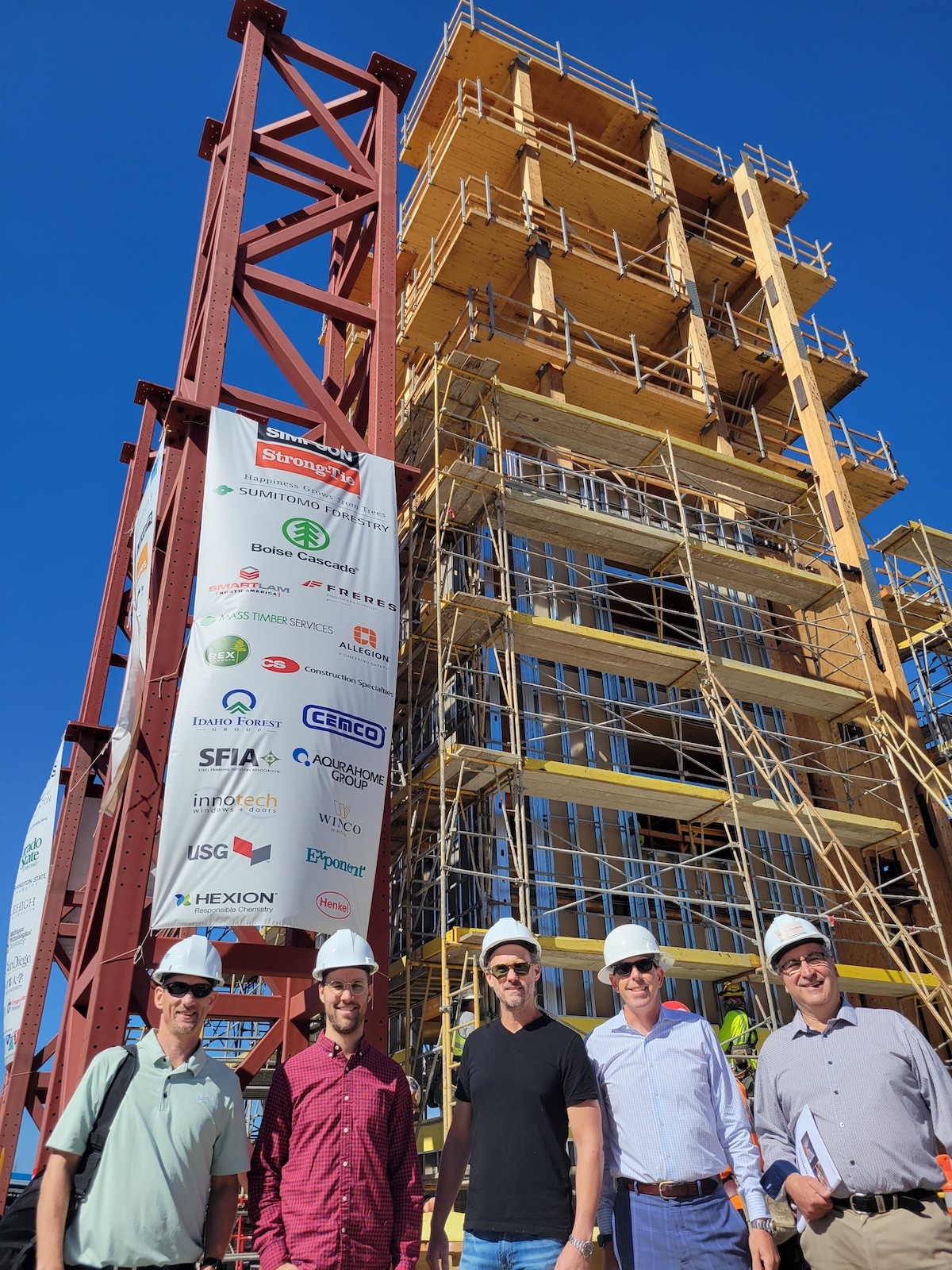
ABOUT THE AUTHOR
Tony Mammone (tony@masstimberservices.com) is Vice President, Client Relations | Sustainable Solutions at Mass Timber Services, a supplier of mass timber products and services, based in Calgary, Alb.

